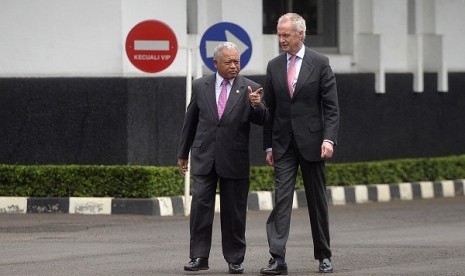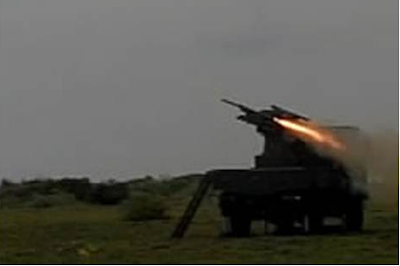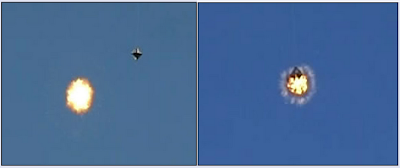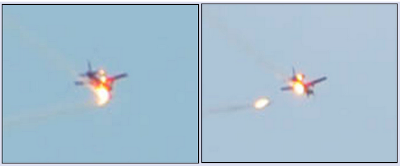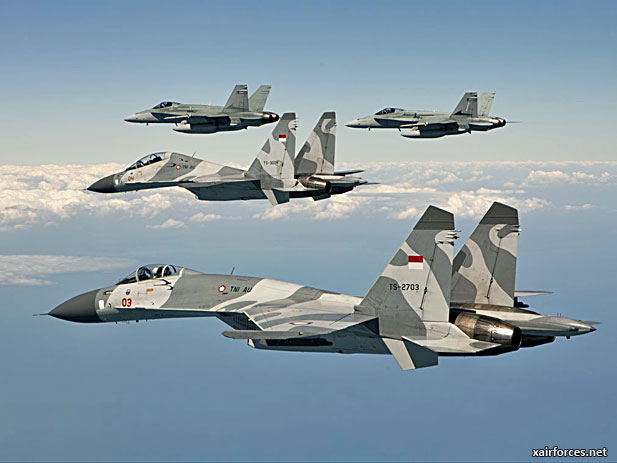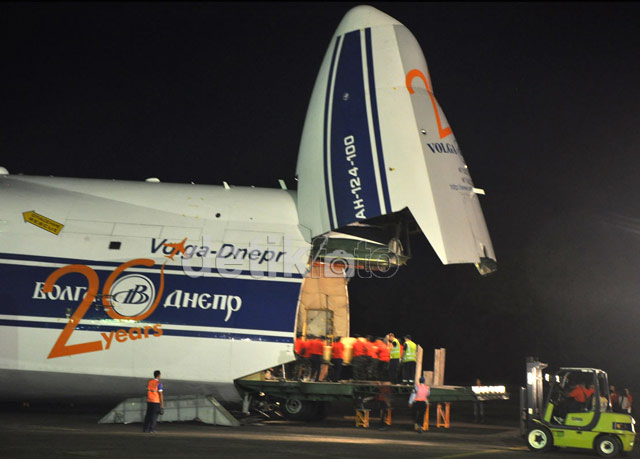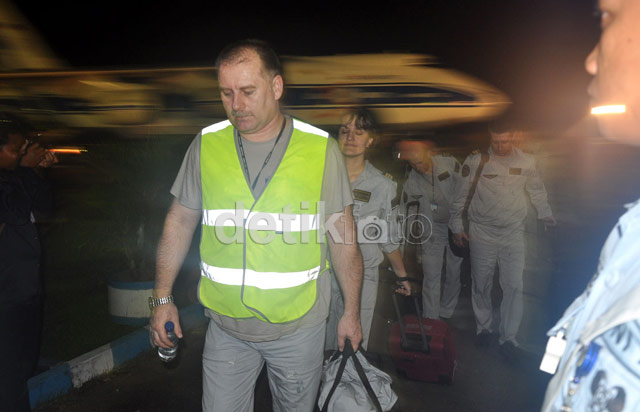Almuchalif Suryo: Dedicating his life to peace
Nani Afrida, The Jakarta Post, Jakarta | People | Thu, February 21 2013, 12:45 PM
(JP/Nani Afrida)(JP/Nani Afrida)Col. Almuchalif Suryo dreamed of being a peacekeeper since he was a little boy.
At that time, Suryo saw a group of soldiers who were about to go to Vietnam and Sinai in the Middle East on peace missions. They wore blue berets and light brown uniforms with the Indonesian flag on them. The color of their uniforms was totally different to the usual Indonesian Military (TNI) color of green.
“I was the son of a military man and grew up in a military neighborhood. Seeing soldiers with different uniforms, particularly with the Indonesian flag on it, attracted me,” the 42-year-old told The Jakarta Post recently, smiling.
After Suryo grew up, the idea to be a peacekeeper became more reasonable.
“Actually, I wanted to be a peacekeeper because the duty is unique and challenging as we have to help maintain peace in foreign countries that have different situations from Indonesia,” he said.
His dream has finally come true. Starting this year, Suryo will work at the United Nations Department of Peacekeeping Operations (DPKO) in New York. He will be the first Indonesian military officer to work in the department, which oversees peacekeeping operations around the world.
For the next two-and-a-half years, Suryo will work as a planning officer with the military planning service in the office of military affairs at the DPKO.
“The DPKO chose me after an intense selection process. I had to compete with 146 candidates from around the world to secure the position,” said Suryo, who loves reading and adventure activities, adding that the process had taken a long time and lots of energy.
“This proves that Indonesian military officers have the opportunity to work in senior positions within UN peace operations,” he said, failing to conceal his happiness.
Of course, his previous experience as a military observer in war zones helped him to secure the job.
Suryo started his career in close proximity to peace missions in 1999, working as a liaison officer to both the UN Mission in East Timor (UNAMET) and the International Force for East Timor (Interfet). During this posting, he participated in the negotiations to free the local military commander of Soibada in East Timor (now Timor Leste), Capt. Artawan, who had been abducted by the National Council of Timorese Resistance (CNRT).
His role in East Timor also included working in a joint TNI and Interfet investigation into the so-called Montain incident, which had resulted in the death of a police officer.
“During my tour of duty in East Timor, I had no experience as a military observer for the UN. But it convinced me that I was capable enough to work as a military observer,” he said.
Suryo was then appointed as a military observer for Sierra Leone in 2002-2003. Thereafter, he obtained further experience in peacekeeping missions after joining the UN Interim Force in Lebanon (UNIFIL) in 2009.
The officer, who holds a master’s degree in diplomacy and military science from the University of Norwich in Vermont, the US, currently works as operational planning director at the Indonesian Peacekeeping Center (IPC).
Indonesia, which has sent soldiers to a number of peacekeeping missions since 1957, aims to send out 4,000 peacekeepers by 2014, including more experts.
During his time as a military observer, the father of two had many interesting experiences including how to deal with rebels. In some countries, like Sierra Leone, Suryo met child soldiers who turned their weapons on him.
“They were so young but were used to killing people. In the end, they were only children who smiled when I gave them some free candy,” he said.
Suryo said the biggest challenge for him during his overseas missions was the culture shock. He not only had to face people from vastly different backgrounds in the various conflict zones but he also had to work with peacekeepers from a number of different countries.
“The language barrier was a serious problem. We all spoke English but with different accents and sometimes that created different meanings,” he said laughing.
As peacekeepers often have to work in challenging and remote areas that are very difficult to access, using walkie-talkies (more formally known as handheld transceivers) is a must for them.
However, using walkie-talkies often exacerbate the language barrier. Sometimes officers cannot understand each other when they try to communicate.
Suryo had a funny experience while on one of his peace missions. The new duty officers kept complaining about the walkie-talkies.
“I was surprised that all the new duty officers complained that their walkie-talkie was broken. When I asked a technician to repair the equipment, they said nothing was wrong with it,” he recalled, adding that he finally realized that the problem lay in the officers’ difficulties coping with different accents.
Suryo believes that a military man like himself can be involved in peace missions although many people only view soldiers as fighters.
“Soldiers must know how to change their mind-sets based on certain operations. We are not only fighters but also warriors in bringing peace,” he said smiling.
Almuchalif Suryo: Dedicating his life to peace | The Jakarta Post
Indonesia earmarks 1.56 bln USD for army modernization in 2013
Souce:Xinhua Publish By Thomas Whittle Updated 15/02/2013 3:52 am in World
JAKARTA, Feb. 13 — The Indonesian House of Representatives has approved a military budget worth 1.56 billion U.S. dollars to update Indonesia’s weapons system this year, aiming to strengthen and modernize the country’s military arsenal, an army general said Wednesday.
Army Chief of Staff Pramono Edhie Wibowo said the 1.56 billion U.S. dollars budget approved was to buy new weapons and replace the old ones simultaneously by phase in 2013.
“The army will acquire 24 units of helicopters of 412 type, Leopard tanks, cannons and rockets with a firing range of up to 100 kilometers,” Pramono said, adding that negotiations are in progress for the purchase of 20 units of helicopters of black hawk type.
Indonesia’s Antara news agency quoted the General Pramono as saying that the army would start buying the equipment directly from the producing countries in line with the procedure and the equipment would be distributed by phase to various regions which need modernization of weapons system.
As the biggest country and economy in Southeast Asia, Indonesia has begun to leverage its growing economy to overhaul its aging military hardware. Indonesia raised its defense budget to 8 billion U.S. dollars for 2013, a 6.6 percent increase from last year.
http://www.nzweek.com/world/indonesia-earmarks-1-56-bln-usd-for-army-modernization-in-2013-48998/





